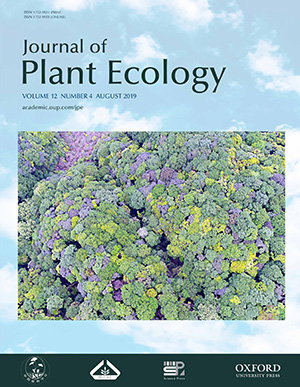Xiaoshuai Wang, Frank Yonghong Li, Yuanheng Li, Xin Song, Xudong Guo, Xiangyang Hou and Taogetao Baoyin
Aims
The divergent changes of plant species under land use changes are key mechanisms underlying vegetation succession. Stipa grandis steppe and Stipa krylovii steppe are two plant communities widely distributed on the Mongolian Plateau. They have been speculated to be able to succeed into each other under different land use types and intensities based on the observations on their presence and abundance at the sites with different land use history. However, no direct evidence, neither the underlying mechanisms, have been reported for this speculation. Here, we verified this speculation and explored the underlying mechanisms in the typical steppe region of Inner Mongolia.
Methods
We investigated the abundance and reproductive behavior of S. krylovii and S. grandis under different land use types and intensities. We used 18 grassland paddocks to run a 6-year experiment with 6 management treatments (T0—unused, T1—grazing monthly in plant growing season, T2, T4, T6—grazing in different months in plant growing season, and T8—mowing) replicated three times. We measured the relative density and cover of S. krylovii and S. grandis using line sampling method and examined their number and biomass of vegetative and reproductive tillers using quadrat method in each paddock after treatments for 4 and 6 years. We also determined these plant attributes in 14 pairs of heavily versus lightly used grassland plots in a wide area (150 km × 200 km) of the typical steppe region.
Important Findings
1. Grazing largely and mowing moderately decreased the density ratio and coverage ratio of S. grandis to S. krylovii in grasslands (P < 0.05), and the differences in these ratios between grazed and unused grasslands increased with time.
2. Grazing, but not mowing, significantly enhanced the relative density (Nrep = reproductive tiller number/total tiller number) of, and biomass allocation (Brep = reproductive tiller biomass/total biomass) to, reproductive tillers of S. krylovii (P < 0.05), but not S. grandis. This grazing enhancement to sexual reproduction of S. krylovii, and additionally inhibition to Nrep of S. grandis (P < 0.05), were found across the 14 pairs of heavily versus lightly used plots.
3. Seasonal pattern of grazing affected sexual reproduction of S. krylovii. The Nrep and Brep was higher under grazing in July and September (T4) than in July and August (T6) or in May and July (T2) (P < 0.05), suggesting a relatively positive effect of grazing on sexual reproduction in July (tasseling phenophase) than in May or August.
Our results provide direct evidence to the reciprocal change of S. grandis and S. krylovii in steppe communities under different management and indicate that gazing or mowing enhancement of sexual reproduction of S. krylovii relative to S. grandis is one of the mechanisms for the change.








